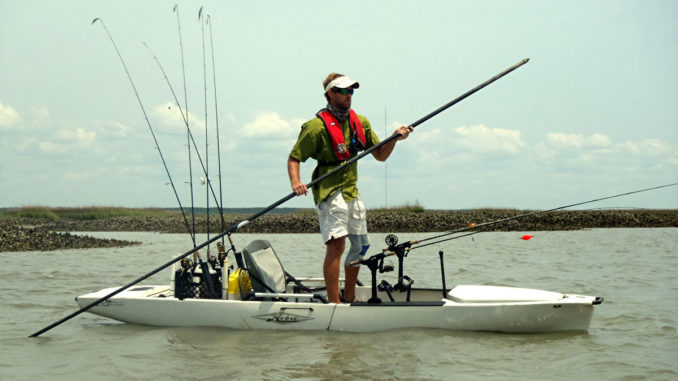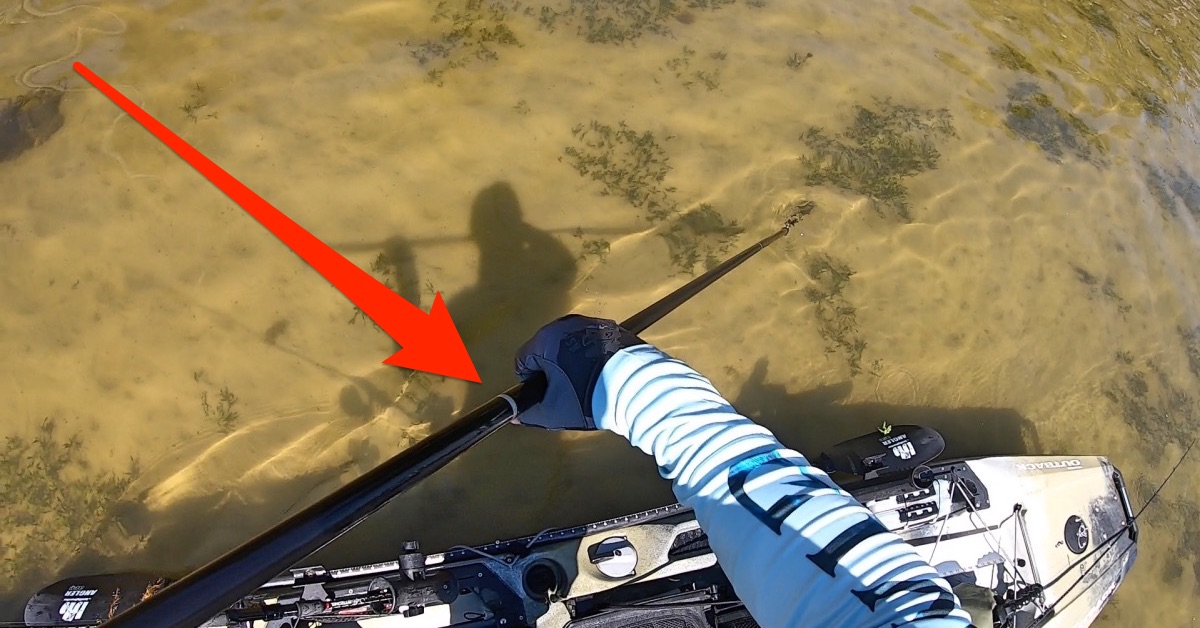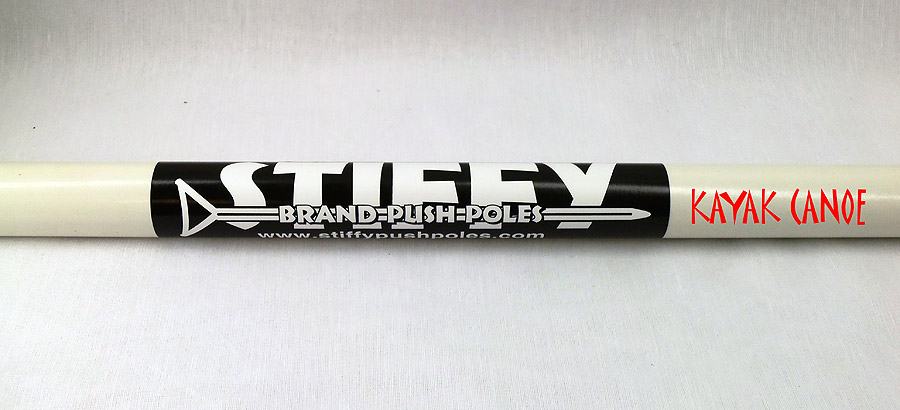What does a kayak push pole do and why do you need one?
A push pole is a long pole that is used to propel a kayak or canoe. It is inserted into the water and used to push the boat forward. A push pole is necessary for propelling a kayak or canoe in shallow water. It can also be helpful for navigating in tight spaces or moving around in windy conditions. You may also hear them referred to as stiffy poles.

Can you even pole a kayak?
Yes, it is possible to pole a kayak. Poling a kayak is a great way to increase your speed and move through the water with less effort. It is also a great way to navigate in windy or choppy conditions. There are a few different ways to pole a kayak, but the most common is to use a long, light pole with a T-handle. When poling, you want to extend your arm out in front of you and use your body weight to push the pole into the water. Be sure to keep your back straight and use your core muscles to hold yourself in position.
How to: Push Poling a Kayak
- Plant the pole firmly in the water.
- Push steadily on the pole, using your arms and upper body muscles, not your back.
- Steer the kayak using the pole as a rudder.
- Keep the pole vertical as you push.
- Adjust your stroke to match the speed of the kayak.

Some other kayak push poling tips
- Tip #1: Install a bungee cord on the front of your vessel and wear a paddle holster, this will make it easy to quickly put up your pole and grab your rod if you see a fish.
- Tip #2: Don’t bang the pole on the side of your kayak, the noise will spook off the fish.
- Tip #3: Keep the rudder locked in a straight position so you move in a straight line. If you don’t have a rudder, you may find yourself zigzagging as you pole, so I definitely recommend getting one.
- Tip #4: If the bottom is soft, pull yourself instead of pushing yourself. You can put the pole ahead of you, pull yourself forward, and then twist the pole out of the bottom if it’s getting stuck in soft mud.
- Tip #5: Use both ends of the push pole to stay moving straight, and to make sure you don’t knock the pole into your yak or rod, use both ends of the pole to propel yourself through the water.
What to look for in a kayak push pole
When looking for a push pole for your kayak, there are a few things you should consider. The first is the material. Most push poles are made of graphite or fiberglass, both of which are lightweight and durable. Graphite is more solid but also more expensive.
How long should a push pole be?
The next thing to consider is the length. For a kayak, a shorter push pole is fine since you will be in shallow water and hopefully not too heavily loaded down. I would not recommend anything over 14 feet because it is not easily stored and is impractical for this scenario.
Stiffness is also important, a stiffer pole will propel better but will make it difficult to make quick redirections if the kayak tracks off course. A more flexible push pole is better suited for beginners and is more forgiving when have to make adjustments.
Finally, think about the bottom you will be poling in, will it be a hard bottom or soft and muddy? This will help you decide what kind of foot and tip to look for in a push pole. The foot is typically wide and smoother for moving through soft mud while the tip of the pole is pointed to contact and push off hard bottom.
Stiffy Push Pole
This push pole is designed to help you easily propel your kayak through the water. The pole is made of lightweight fiberglass, and has a smaller diameter than the original, just for kayakers.

Superstick Push Pole
This is a great push pole for kayaks. It is made with a super strong fiberglass and has a comfortable grip. This pole is telescoping and features a duck foot and storage clips.

Yakattack Push Pole
The Yakattack ParknPole doubles as a push pole and anchor pole for versatility.

Old town push pole
is another push pole maker that has an aluminum or composite option and a 2 piece design.
DIY kayak push pole
For those more frugal fishermen, a good homemade option for a push pole is a fiberglass tree stake with a pvc tee handle on the end. The spike is already pointed and is a good size for poling a kayak. It won’t be as good as the push poles above, but it can be much less expensive.
Conclusion
Whatever push pole you decide to go with, make sure it’s the right one for your setup. A good push pole can make all the difference between a good day on the flats or a sore back and an empty fish cooler.

